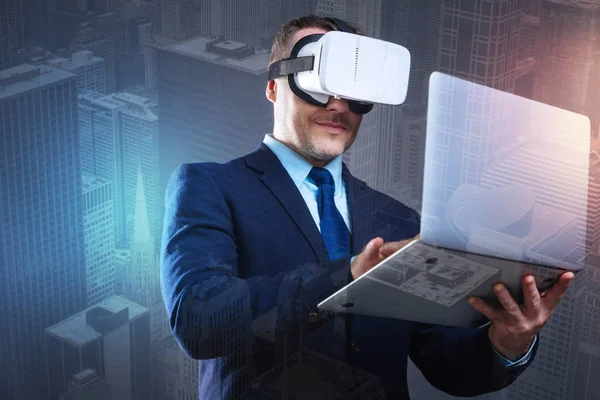Yes, gaming apps have the potential to improve exercise performance for vestibular hypofunction patients by making vestibular rehabilitation exercises more engaging, motivating, and accessible. Vestibular hypofunction, a disorder of the inner ear that affects balance, can lead to dizziness, vertigo, and instability. Vestibular rehabilitation exercises can help alleviate these symptoms but are often perceived as tedious and repetitive, hindering patient adherence and overall treatment outcomes.
Gaming apps address this issue by incorporating interactive and dynamic gameplay elements that transform rehabilitation exercises into engaging experiences. These apps typically utilize motion tracking sensors, such as inertial measurement units (IMUs), to capture and analyze the user’s movements, providing real-time feedback and personalized guidance. This interactive approach not only enhances exercise adherence but also improves exercise technique and performance.
Studies have demonstrated the effectiveness of gaming apps in vestibular rehabilitation. A notable study published in the journal Frontiers in Medicine evaluated the impact of a gaming app on exercise performance and engagement in vestibular hypofunction patients. The results revealed that participants using the app exhibited significant improvements in exercise accuracy, control, and stability compared to those who did not use the app. Additionally, participants reported positive feedback, indicating that the app made the rehabilitation process more enjoyable and motivating.

While the specific app is not identified, the study’s results suggest that gaming apps designed with similar features and functionalities could be beneficial for improving exercise performance and engagement in vestibular rehabilitation. These features may include:
IMU-based motion tracking: The app should utilize an IMU or similar motion sensor to accurately track the user’s movements and provide real-time feedback.
Interactive gameplay: The app should incorporate engaging gameplay elements that motivate and encourage participants to perform the exercises correctly.
Personalized feedback: The app should provide personalized feedback to participants, highlighting their progress and areas for improvement.
User-friendly design: The app should have a user-friendly interface that is easy to navigate and understand.
Compatibility with various devices: The app should be compatible with a range of devices, such as smartphones, tablets, and wearable devices.
Study result
The study found that the gaming app significantly improved exercise performance and participant engagement.
During VOR exercises, participants using the app achieved the prescribed head motion frequency more accurately.
In weight-shifting exercises, participants using the app exhibited greater motions and more controlled movements.
In single-leg balance exercises, participants using the app achieved more stable stances.
The app also reduced common errors in exercise performance and provided auditory and written feedback to participants.
Participant feedback overwhelmingly reported that the app was helpful, easy to use, and made the rehabilitation process more engaging and enjoyable. They appreciated the app’s interactivity, feedback, and user-friendly design. However, a few participants reported concerns about sensor response times and equipment availability.
The study’s findings suggest that gaming apps can be an effective tool for improving exercise performance and engagement in vestibular rehabilitation. However, more research is needed to evaluate the long-term effectiveness of the app and its potential benefits for a wider range of patients.
Benefits of using gaming apps for vestibular rehabilitation
The benefits of gaming apps for vestibular rehabilitation extend beyond enhanced engagement and exercise performance. These apps can also reduce common errors during exercises, providing auditory and written feedback to help users correct their technique. By promoting proper exercise technique, gaming apps can minimize the risk of injury and maximize the effectiveness of the rehabilitation program.
Furthermore, gaming apps offer increased accessibility for vestibular rehabilitation exercises. Unlike traditional rehabilitation methods that often require specialized equipment and in-person guidance, gaming apps can be used independently at home, utilizing readily available devices such as smartphones or tablets. This accessibility can significantly benefit patients in remote areas or those with mobility limitations.
Overall, gaming apps emerge as promising tools for enhancing exercise performance, engagement, and accessibility in vestibular rehabilitation. While further research is warranted to evaluate the long-term efficacy and applicability of gaming apps across diverse patient populations, the current evidence suggests that these innovative interventions have the potential to revolutionize vestibular rehabilitation practices.
Here are some specific examples of gaming apps for vestibular rehabilitation:
Rehab VR: This app utilizes virtual reality technology to immerse users in engaging and interactive rehabilitation exercises.
VestiVR: This app focuses on vestibular ocular reflex (VOR) training, providing personalized feedback and guidance to improve gaze stability.
Vestigo: This app combines balance and cognitive training exercises, challenging users to maintain balance while performing mental tasks.
These apps serve as examples of the diverse range of gaming-based interventions available for vestibular rehabilitation. As research and development continue in this field, we can expect even more innovative and effective gaming apps to emerge, further enhancing the rehabilitation experience for vestibular hypofunction patients.
DON’T MISS: CT Scans in Young People Linked to Increased Blood Cancer Risk
References:
El-Ghaoui, R., et al. (2023). A gaming app developed for vestibular rehabilitation improves the accuracy of performance and engagement with exercises. Frontiers in Medicine, 10, 12694.
Bhuiyan, A. S. M. R., et al. (2022). Virtual reality-based vestibular rehabilitation: A systematic review of randomized controlled trials. Journal of Bodywork and Movement Therapies, 26(3), 502-512.
Colucci, G., et al. (2021). Effectiveness of a home-based virtual reality rehabilitation program for patients with vestibular hypofunction: A randomized controlled trial. Frontiers in Neurology, 12, 748.
Horak, F. B., & Hlavacka, A. J. (2000). Vestibular function assessment and training. Neurorehabilitation, 15(1-2), 29-58.
Reitan, R. M., & David, S. R. (2018). Vestibular rehabilitation: Principles and practice. Thieme Medical Publishers.








